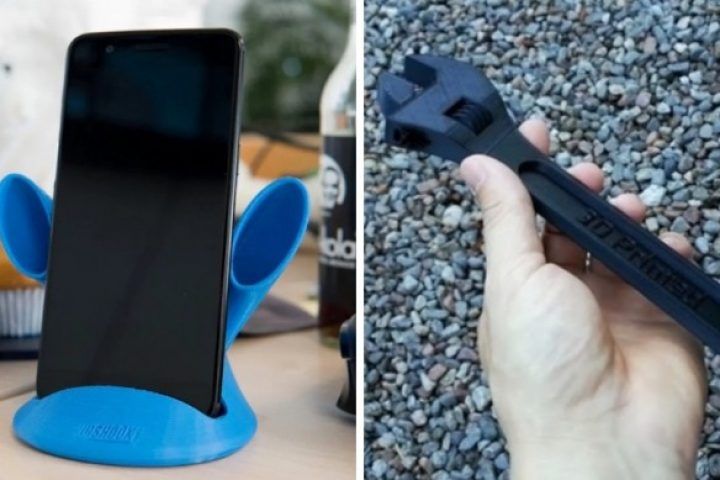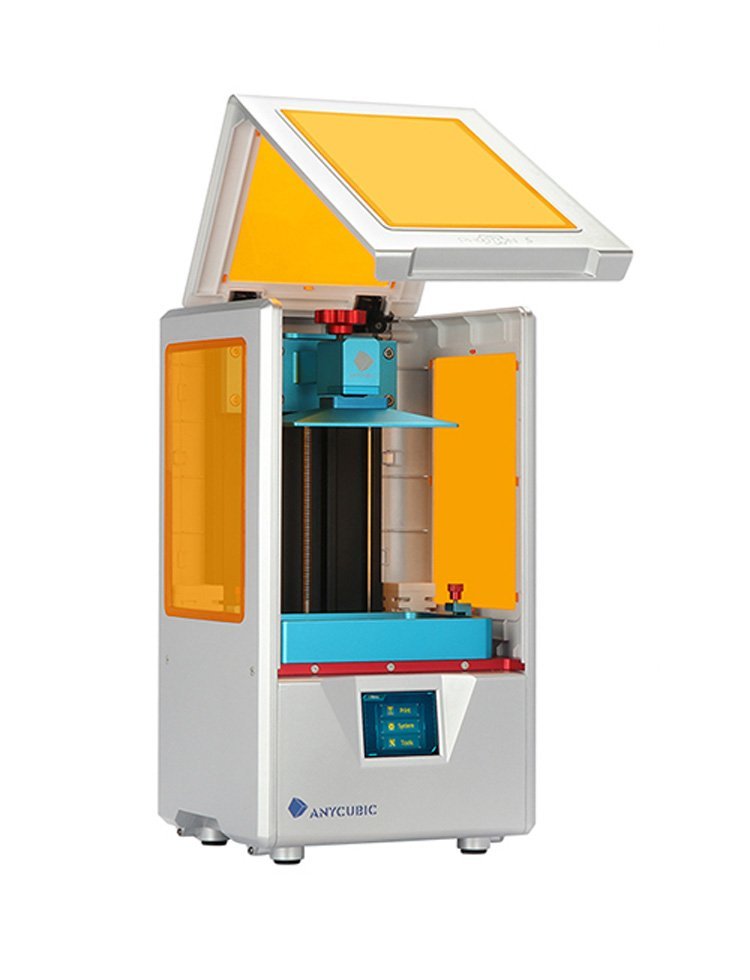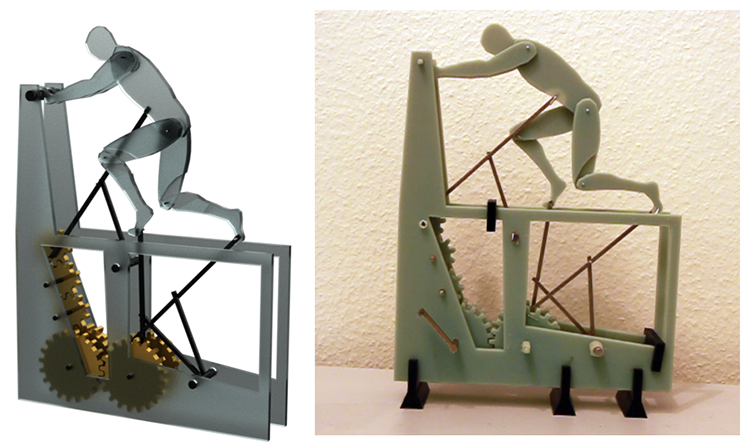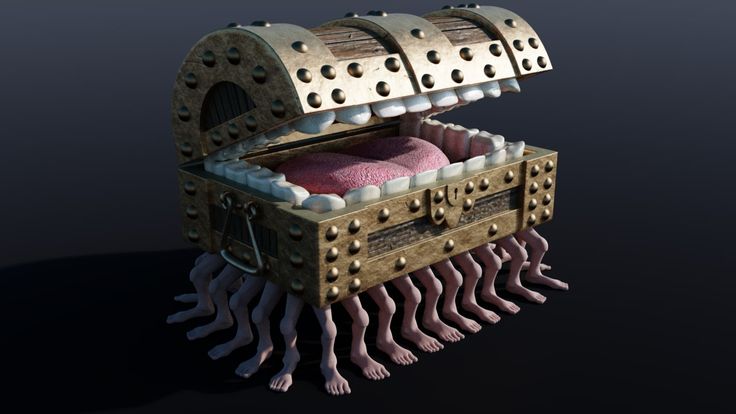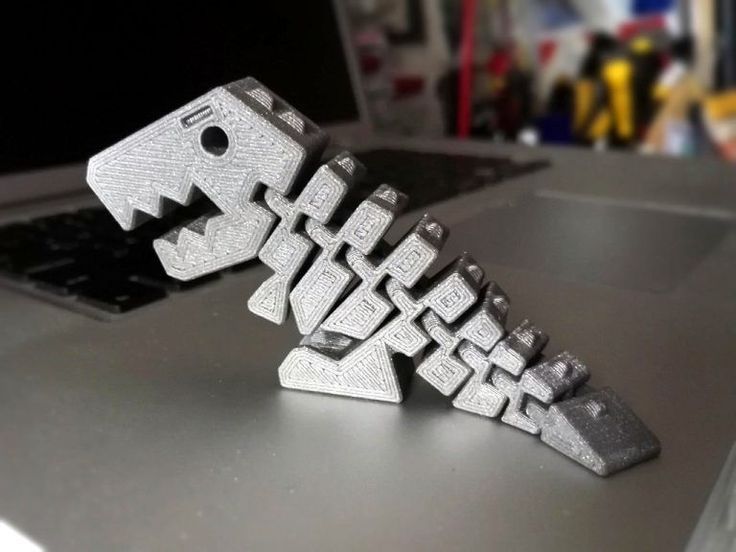3D printer screw extruder
EX6 and MDPE10 Extruder Screws – Filabot
- Description
- Specs
- Videos
Our screws are designed and tested by our engineers to meet a variety of customer needs. These screws for in the Filabot EX6 filament extruder and in the MDPE10 direct printing extruder.
Standard Screw (EX6-625): Our standard screw is designed for most PLA and ABS grades typically used for 3D printing, as well as other polymers with a similar melt viscosity. Our standard screw works best with pellets and granules in the 2-5mm size range.
Standard Screw - Chrome Plated (EX6-625CHR): EX6 standard extrusion screw, upgraded with chrome plating. This new feature provides a slippery surface compared to stock screw this allows for an easy glide of materials. This screw is preferred for tight tolerance extrusion.
Standard Higher Shear (EX6-120-C2): This screw is the same spec as our Standard Screw, only shallower (high shear). This design can improve performance when using powders and smaller pellets (3mm and under).
Standard Higher Shear Screw - Chrome Plated (EX6-120-C2-CHR): Upgraded with chrome plating. This new feature provides a slippery surface compared to stock screws this allows for an easy glide of materials.
High Compression Screw (EX6-120-C3): Best for pellets/granules in the 3mm and under range. This screw offers a higher compression than our Standard Screw.
High Compression Screw - Chrome Plated (EX6-120-C3-CHR): Upgraded with chrome plating. This new feature provides a slippery surface compared to stock screws this allows for an easy glide of materials.
Low Compression Screw (EX6-145-C125): This screw can improve performance with higher melt viscosity polymers which require less compression. Pellets and granules in the 2-4mm size range work best with this screw.
Low Compression Screw - Chrome Plated (EX6-145-C125-CHR): Upgraded with chrome plating. This new feature provides a slippery surface compared to stock screws this allows for an easy glide of materials.
This new feature provides a slippery surface compared to stock screws this allows for an easy glide of materials.
No Compression Screw (EX6-145-C0): This screw can improve performance with higher melt viscosity polymers that require no compression. Pellets and granules in the 2-4mm size range work best with this screw.
No Compression Screw - Chrome Plated (EX6-145-C0-CHR): Upgraded with chrome plating. This new feature provides a slippery surface compared to stock screws this allows for an easy glide of materials.
Full Screw Bundle (Qty 5) - Unplated: This bundle includes the 5 EX6 (except the chrome screw) screws at a discount price. These screws are not plated with chrome.
Full Screw Bundle (Qty 5) - Chrome Plated: This bundle includes the 5 chrome-plated EX6/MDPE10 screws at a discount price.
Click here for screw specs.
No Videos Currently
Reviews here
3D Printer Filaments - Twin-Screw Extruder
Advances in 3D printer filaments
The world of 3D printing continues to grow. Whereas acrylonitrile butadiene styren (ABS) polylactic acid (PLA) are commonly used 3D printer filaments, particularly for hobbyists or high-volume manufacturers, new materials enable expanded functionality of 3D printed pieces and parts. Purchasers look for materials that exhibit extended resistance to chemicals, heat or fatigue, and physical properties such as strength, rigidity, flexibility, softness, color and appearance.
Whereas acrylonitrile butadiene styren (ABS) polylactic acid (PLA) are commonly used 3D printer filaments, particularly for hobbyists or high-volume manufacturers, new materials enable expanded functionality of 3D printed pieces and parts. Purchasers look for materials that exhibit extended resistance to chemicals, heat or fatigue, and physical properties such as strength, rigidity, flexibility, softness, color and appearance.
3D Printer Filament Strand
Printer makers introduce new 3D printing technologies such as digital light processing (DLP), stereolithography (SLA), selective laser sintering (SLS), fused deposition modelling (FDM) and 3D microfabrication. The ever-expanding list of applications require the adoption of materials such as carbon fibers, polyurethane siloxane copolymers, elastomeric polyurethane (EPU), polyvinyl alcohol (PVA), and polyether ether ketone (PEEK).
Filament extrusion
Common to most 3D printing methods is the use of polymeric filaments. And common to almost all 3D printing filaments is an extrusion process that creates the spools of printing material. Due to the nature of the 3D printing process, the diameter of the filament requires tight tolerances and control. A strand of filament with a fluctuating diameter creates an inconsistent volume of material and poor layer quality and bonding characteristics.
And common to almost all 3D printing filaments is an extrusion process that creates the spools of printing material. Due to the nature of the 3D printing process, the diameter of the filament requires tight tolerances and control. A strand of filament with a fluctuating diameter creates an inconsistent volume of material and poor layer quality and bonding characteristics.
Single-screw extruders have high pressure build-up and constant output, which is important for maintaining a constant filament diameter. While this process is sufficient for creating simple 3D printer filaments of ABS or PLA, the single-screw extruders is inefficient at mixing or compounding advanced 3D printing materials that consist of multiple component formulations.
Advantages of twin-screw extruders
Twin-screw extruders are much better suited to compounding multiple ingredients into a homogeneous blend for creating the filament. However, the twin-screw extrusion process results in a slightly pulsating output, making it difficult to maintain a constant filament diameter.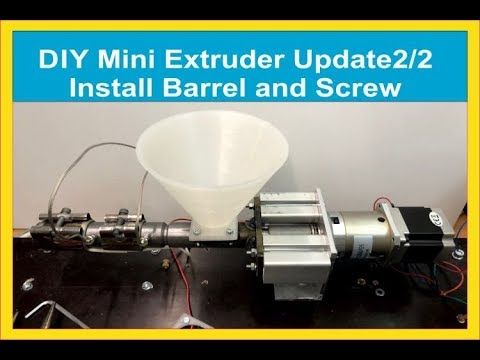
For the use of these filaments in a 3D printer, however, a constant filament diameter is mandatory as it determines the shape quality and stability of the final printed product. Therefore, a constant output of the extruder is necessary to achieve the desired filament specification. The solution is to add a melt pump to the process to meter material through a set of intermeshing gears. These pumps maintain a consistent pressure and throughput. Melt pumps can increase output, reduce scrap, and control surge.
Comparison of extruders for filament production
The Thermo Fisher Scientific Process 11 is a benchtop twin-screw extruder that is ideal for the development and experimentation of new 3D printing materials and printing processes, or for short-run production of advanced 3D printer filaments. The extruder features minimized material use (20 g), a throughput range of 20g/h to 2.5kg/h, segmented screw design with removable top half barrel for easy clean-up and fast turnaround times. Its geometrically scalable screw and barrel design provides scale-up to larger extruder set-ups.
Its geometrically scalable screw and barrel design provides scale-up to larger extruder set-ups.
Our application specialists compared the output of a single-screw extruder, twin-screw extruder, and the addition of a melt pump to a twin-screw extruder to demonstrate the variation and control of 3D printer filaments using these three processes. Learn more by reading the application note titled, “Use of melt pump to produce filaments for additive manufacturing (3D printing).”
Or attend one of our upcoming seminars.
Want to speak to someone? Need a quote? Want a demo?Contact us | Opt in for email communications on this and other topics.Sign up for email |
F2 Quart industrial 3D printer
FGF or FDM/FFF
Choose which printer you need:
for detailed filament or fast granule printing
Camera
In-house electronics and intuitive development interface
F2 innovations
Industrial complex for high-temperature 3D printing, in-house production and development by F2 innovations.
| Now order |
| Get detailed characteristics |
with a printing area to 600*600*600 mm Up to 160 ° C you will no longer have to doubt whether you can be able to doubt whether you can be able print what you want.
You can.
F2 Quart
New Improved High Temp
New for 2022, the Quart printing system allows you to print with granules or filament almost without limit, this printer has taken all the best from Lite and Pro, see for yourself.
F2 Quart Printer - industrial complex
for high temperature 3D FDM/FFF or FGF printing.
F2 Quart
New Improved High Temperature
New for 2022, the Quart Printing Complex allows you to print with granules or filament with almost no limits, this printer has taken all the best from Lite and Pro, see for yourself.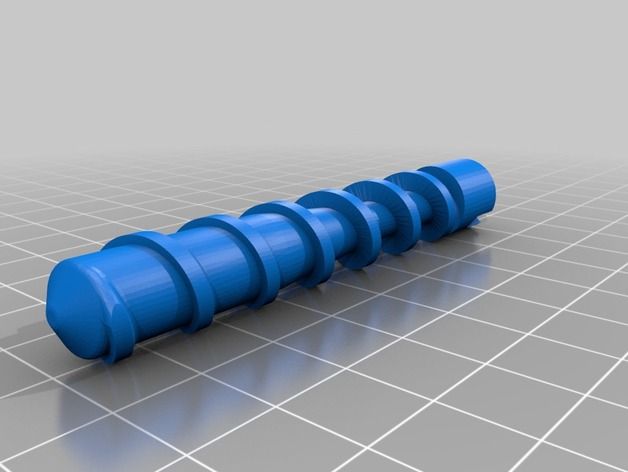
F2 Quart Printer -
industrial complex for high temperature 3D FDM/FFF or FGF printing.
FDM/FFF version:
extruder (up to 550°C) allows printing not only with standard polymers (ABS, PLA, PP, etc.), engineering polymers (ASA, PC, ABS+CF and etc.),
but also high temperature polymers such as PEEK, PEKK, Ultem, PEEK+CF, PSU, PPS, etc.
In the FGF version:
heating of the material, high quality of mixing and optimal parameters for laying out the material, which affects the final quality of the resulting
items.
F2 Printing Technology
We developed FDM/FFF 3D printing technology to open up new possibilities for additive technologies in all industries, making 3D printing of any materials fast and high-quality for each manufacturer.
| Read more |
F2 Printing Technology
We developed FDM/FFF 3D printing technology to open up new possibilities for additive technologies in any industry, making 3D printing with any materials fast and high-quality for each manufacturer.
| More details |
Nozzle diameter
FGF - 1 / 1.5 / 3 / 5 / 8 mm
900 3.0 FDM / FFF -
900 3.0 / 0.8 1 mm
extruders
FGF - Granular (up to 500 ° C)
FDM/FFF - Divine high -temperature extruder
(up to 550 ° C)
Print chamber up to 160 ° C with convection
22 Printable area
up to 600*600*600 mm
Heated platform
Quickly heated to 160 ° C Print platform
User Interface
Own electronics and intuitive interface
Sopel diameter
FGF - 1 / 1.5/5/5 / 5 /5 /5 /5 /8 mm mm 9000m FDM/FFF - 0.4 / 0.6 / 0.8 / 1mm
Extruders
FGF - pellet (up to 500°C)
°С)
Press Camera
Heating up to 160 ° C with convection of
Press area
to 600*600*600 mm
Heated platform
Quick -generated Plant Plant
User Interface
Own Electronics and Intuitively Intuitive Interface
Order Now
User Interface
Proprietary Electronics and Intuitive Interface
Minimal training is required to operate the printer, by looking at the interface you will immediately understand how to operate it.
Print chamber
160°C heated chamber
with convection
Forced convection of the chamber and uniform heating allow printing large parts with high interlayer adhesion.
Parts will not delaminate or deform.
Print chamber
160°C heated chamber
with convection
Forced convection of the chamber and even heating allow printing of large parts with high interlayer adhesion.
Parts do not delaminate or deform.
FDM/FFF version extruders
Twin high temperature extruder allows printing of all available materials
F2 printing technology provides ultra-fast extruder heating to operating temperature in 3 seconds with high melt retention accuracy.
Extruder FGF version
Pellet extruder
Three-zone polymer heating technology inside the extruder ensures uniform material flow and high quality of the resulting product.
Extruder in FGF version
Pellet extruder
Three-zone pellet heating technology inside the extruder ensures uniform material flow and high quality of the resulting product.
Print Platform
Quick Change Print Platform
heated to 160°C
Quick Release Print Platform makes printing quick and easy.
This avoids damage to larger models and allows the printer to be used almost without interruption between print runs.
Print platform
Quick change print platform
heated to 160°C
Quick release print platform makes printing easy and fast.
This avoids damage to larger models and allows the printer to be used almost without interruption between print runs.
By clicking on the button, you consent to the processing of personal data and agree to the privacy policy
We build our printers with care and love – from sketch to finished product,
to give you confidence in every print layer on F2 printers.
We build our printers with care and love, from sketch to finished product,
to give you confidence in every print layer on F2 printers.
Order Now
Plastic Extruders | 3dbot.ru: 3d printing technologies
ABS, PLA plastic extruders for 3d printer
Jul 08
Posted on by 3dbot
The Dutch company CEAD has launched the E50 screw extruder for 3D printing with granulated thermoplastics and composites based on them with a capacity of over 84 kg / h.
CEAD was founded by the same guys who founded the Leapfrog brand, but if Leapfrog produces desktop FDM 3D printers, then CEAD is engaged in purely industrial additive solutions - both portal structures of its own design, and additive systems based on multi-axis robotic manipulators.
Continue reading →
Posted in 3d printing news, 3d printing news, Plastic extruders | Tagged high performance extruders | Leave a replyBut I 03
Posted on by 3dbot
3devo NEXT - Benchtop Filament Extruders
The Dutch company 3devo offers two desktop filament factories. According to the developers, the devices are capable of producing industrial quality bar.
The first variant, dubbed "3devo NEXT", is aimed at enthusiasts ready to make bar at home, small businesses and research institutions.
The cost of the machines is quite high, but extruders can reduce the cost of the filament by about seven times due to the use of granulated plastic and recycled materials, including ABS and PET. When using plastic waste as a raw material, the cost of one kilogram of rod is estimated at approximately $1.25. In addition, the device allows you to experiment with the production of special composites.
An advanced version called "3devo Advanced" is intended for researchers, filament companies and 3D printing studios. The device allows the development and production of small batches of filament for subsequent testing or commercial orders.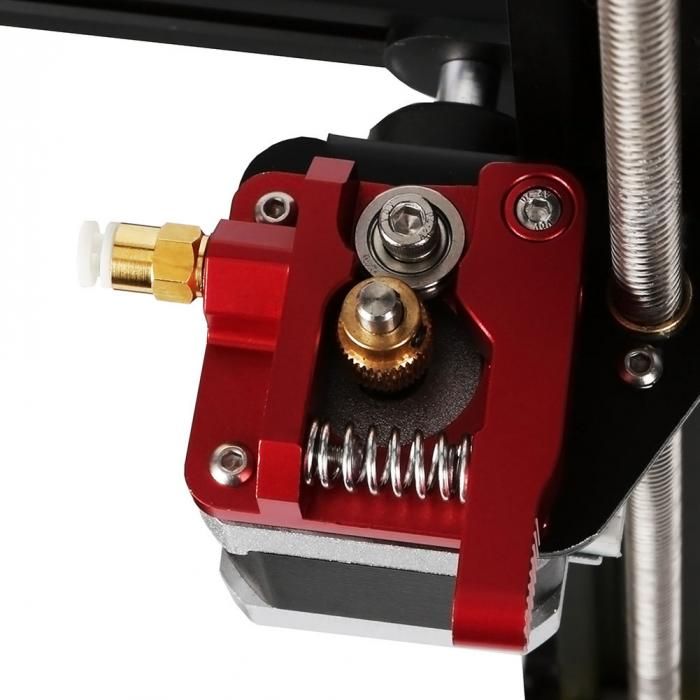 Productivity reaches 0.7 kg of bar per hour.
Productivity reaches 0.7 kg of bar per hour.
Units are equipped with an automatic bar diameter adjustment system and feedback sensors to maintain a stable screw speed. The filament diameter is set within 0.5-3 mm. Sensor error does not exceed 43 microns. Screws are made of nitrided steel. An additional sensor monitors the level of pellets in the hopper. Continue reading →
Aug 09
Posted on by 3dbot
Ceramic LDM extruder for high precision 3D printing
The Italian manufacturer WASP, known for its innovative approach to 3D printing, has announced the release of a professional-grade ceramic LDM extruder that is compatible with most desktop FDM 3D printers. The company's new product opens up great creative possibilities for designers using a wide range of new 3D printing materials.
A new multifunctional LDM extruder (short for Liquid Deposition Modeling) has been developed by the company over the past two years. The device is designed to produce 3D printed objects from liquid materials such as liquid ceramics, porcelain, clay, aluminum, zirconium, and others. A distinctive feature of the LDM extruder from WASP is the high detail of 3D printed objects. Unlike ceramic 3D printers on the market today, the new extruder prints ceramic products with precision comparable to plastic resin 3D printed objects.
The developers achieved this precision by systematically experimenting with different extrusion speeds, different nozzle shapes and different types of materials. Ultimately, they settled on a combination of a screw extruder and a pressure extruder, which can even interrupt and restart the flow of the "filament" without sacrificing accuracy. Continue reading →
Apr 26
Posted on by 3dbot
The Palette 3D Printer Feed System
3D printers are great tools for home and office use.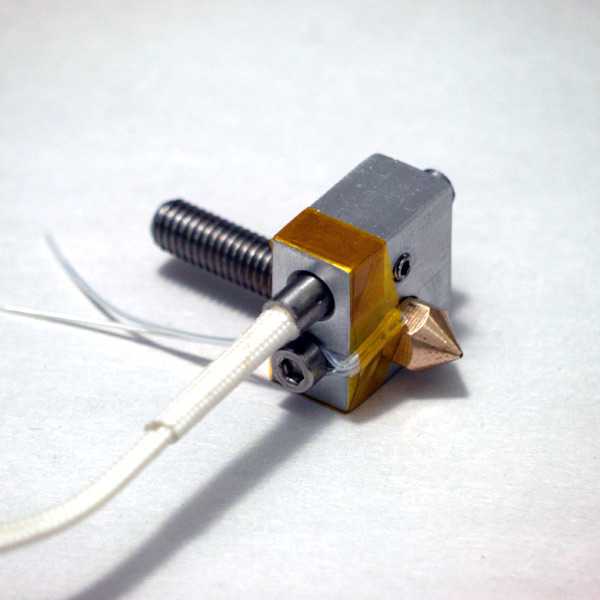 With the help of a 3D printer, you can create a lot of things you need in the household, including toys. However, the vast majority of 3D printers can only print monochrome objects. Now there are some developments, projects of devices of a new type that allow you to create multi-colored objects, but such devices are terribly expensive, and most of them are not on sale.
With the help of a 3D printer, you can create a lot of things you need in the household, including toys. However, the vast majority of 3D printers can only print monochrome objects. Now there are some developments, projects of devices of a new type that allow you to create multi-colored objects, but such devices are terribly expensive, and most of them are not on sale.
The Canadian company Mosaic Manufacturing decided to change this state of affairs. The company's developers have created a system for supplying plastic to the printer, which controls the colored plastic threads, tracking the color gamut of the object (all this can be configured). As a result, instead of a monochrome figure, quite colorful things with a complex structure are obtained.
It is worth noting that now the price of color 3D printers (for example, Cube Pro C) starts at $4990. At the same time, such printers are quite demanding on the loaded plastic, and will not work with all materials.
The Palette is a system that will work with all printers using 1. 75mm filament. This is the standard for most 3D printers. Now the developers are raising funds on Kickstarter. The company estimates the cost of its system at $899. Of course, it's not cheap either. But it's much cheaper than a color 3D printer - and if you really need to print in color, then The Palette is a great option.
75mm filament. This is the standard for most 3D printers. Now the developers are raising funds on Kickstarter. The company estimates the cost of its system at $899. Of course, it's not cheap either. But it's much cheaper than a color 3D printer - and if you really need to print in color, then The Palette is a great option.
Jan 03
Posted on by 3dbot
3D Printer Drawings
Inventor Richard Horn, alias ‘RichRap’, has released parts drawings and assembly instructions for a granular plastic extruder. He started developing the Universal Paste Extruder back in 2011. Now he hopes that the world community will appreciate his development and help improve it. If successful, the new extruder could be a great alternative for users who can't afford costly media.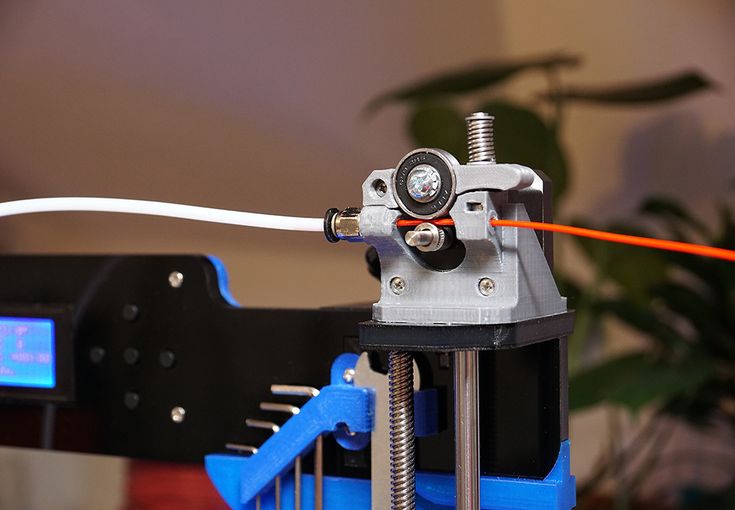
“It's a real pleasure to see people come up with different ink-printing devices,” Horn writes on his blog. “The use of granular materials for 3D printing is the next step to simplify and ubiquitous this wonderful technology.”
Horne initially experimented with the sugar alcohol isomaltite, which is used in cooking. Since it dissolves in water, the inventor decided that it would be an excellent support material if there was a way to turn it into a filament. Then he moved on to PLA plastics and experimented with various granular materials, including those from ColorFabb. Continue reading →
Jan 02
Posted on by 3dbot
Hot-End Volcano
The most obvious factor holding back the popularity of FDM printers is the relatively slow printing speed.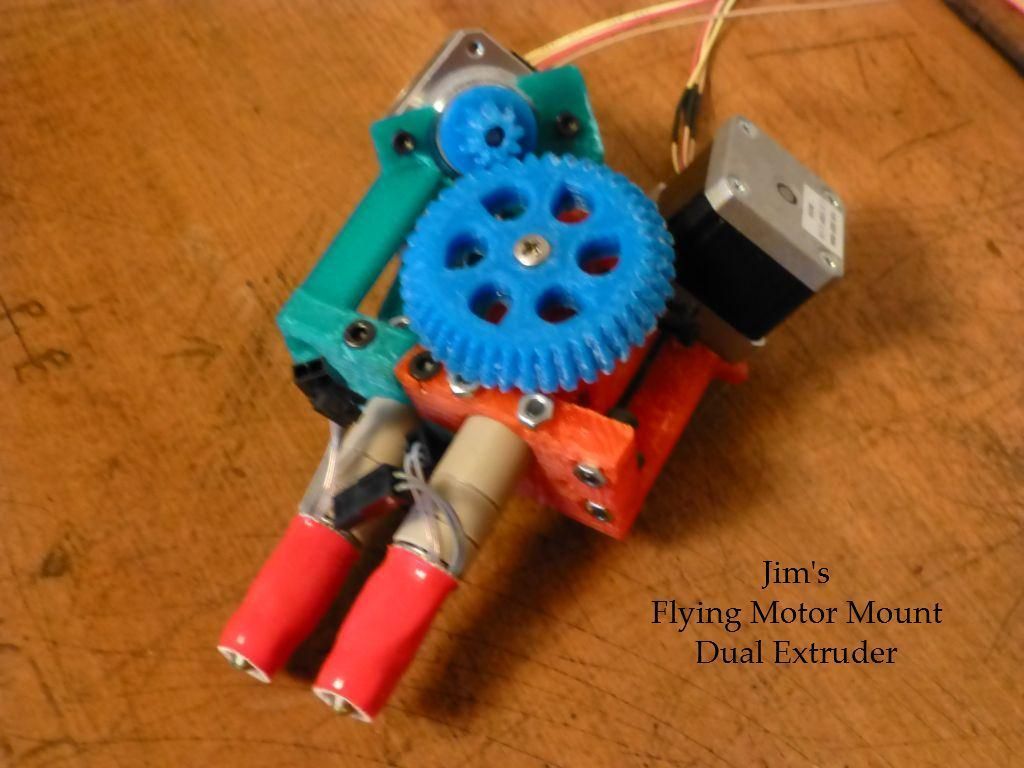 Not everyone is willing to wait 10 hours to get a fairly small model. It is easy to increase the size of the working chamber, but printing large models will only take even longer, because the speed remains still low. E3D is trying to solve the problem of low speed with a new hot-end called Volcano. Importantly, the hot end is compatible with existing extruders manufactured by the company: E3D-v6, Chimera, Kraken and v5/4.
Not everyone is willing to wait 10 hours to get a fairly small model. It is easy to increase the size of the working chamber, but printing large models will only take even longer, because the speed remains still low. E3D is trying to solve the problem of low speed with a new hot-end called Volcano. Importantly, the hot end is compatible with existing extruders manufactured by the company: E3D-v6, Chimera, Kraken and v5/4.
The name couldn't be more apt, as the "volcano" erupts plastic at a rate two and a half times faster than previous models. The secret of the hot end is simple: firstly, it has about twice the length, which prolongs the residence time of the plastic in the heating zone and allows it to be brought to the required extrusion temperature, despite the higher feed rate. Secondly, the new hot end sacrifices Z-axis resolution for extrusion speed. A large gear that takes 1,400 minutes to complete using a standard E3D-v6 hot end can be printed in just 600 minutes using the Volcano mod.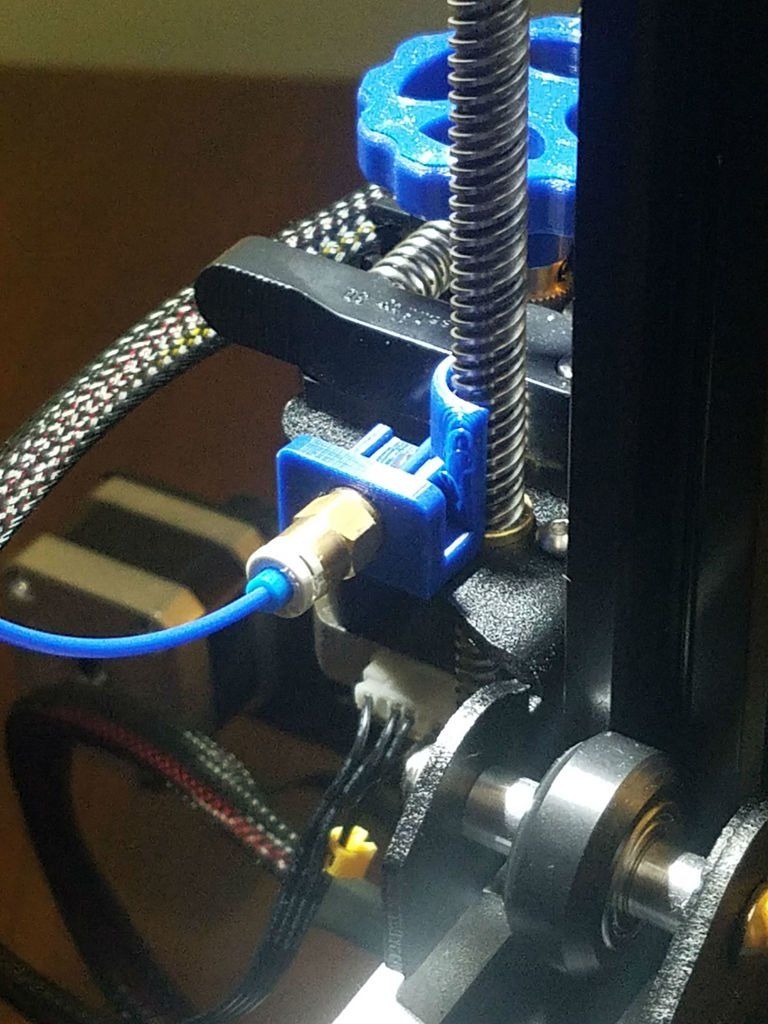 Continue reading →
Continue reading →
Oct eighteen
Posted on by 3dbot
Noztek Pro ABS and PLA Filament Extruder
The high cost of filament has always been a big problem. 3D printers, which turn a digital model into a real object made of plastic or other material, are becoming better, easier to use and cheaper. But unless a better option for filament production is found, the price of 3D printed objects will still be high.
Inspired by the introduction of the Lyman Filament Extruder, which turns plastic pellets into 3D printing filament, UK start-up Noztek has developed the Noztek Pro, a new ABS/PLA filament extruder.
"Most other extruders on the market come in a kit that's ideal for enthusiasts, but now 3D printing is reaching a wider audience and we think a plug-and-play model is more appropriate for users," writes Noztek. “Unpack Noztek Pro and in 15 minutes it's ready to go. Just plug it in, let it heat up to the right temperature, add the polymer beads, turn it on and you're done." 9The 0005 Noztek Pro can produce about 1kg of filament in just 45 minutes, the company says. Wholesale purchase of such granules will be very cheap: according to preliminary calculations, the user can save up to 70% of the retail price of the thread, which varies from 20 to 50 dollars per kilogram. Continue reading →
“Unpack Noztek Pro and in 15 minutes it's ready to go. Just plug it in, let it heat up to the right temperature, add the polymer beads, turn it on and you're done." 9The 0005 Noztek Pro can produce about 1kg of filament in just 45 minutes, the company says. Wholesale purchase of such granules will be very cheap: according to preliminary calculations, the user can save up to 70% of the retail price of the thread, which varies from 20 to 50 dollars per kilogram. Continue reading →
Jul fifteen
Posted on by 3dbot
Stooder plastic extruder
Stooder plastic extruder is a device that converts plastic (in granules) into filament for 3D printing. Undoubtedly, something worth seeing and buying, it will be especially useful for people who are fond of printing.



